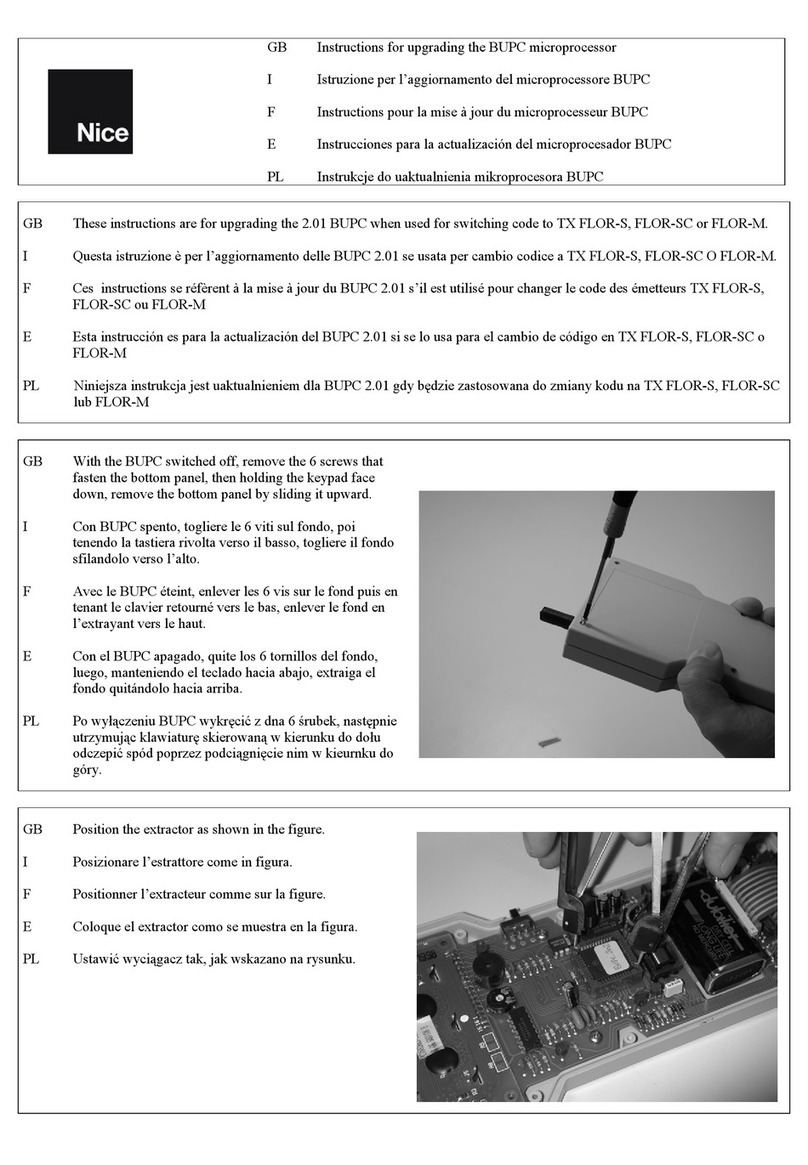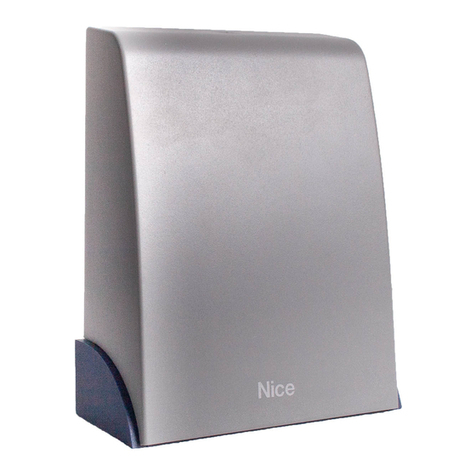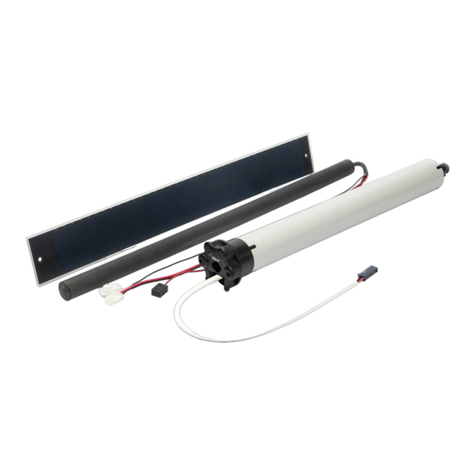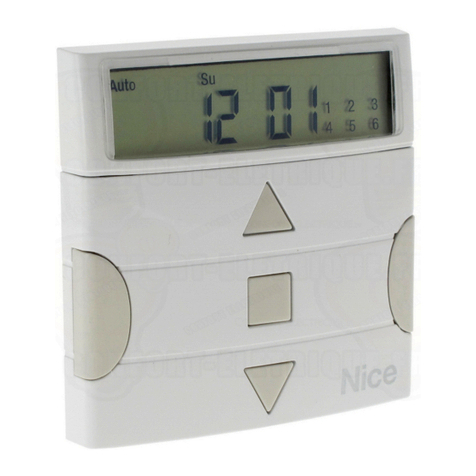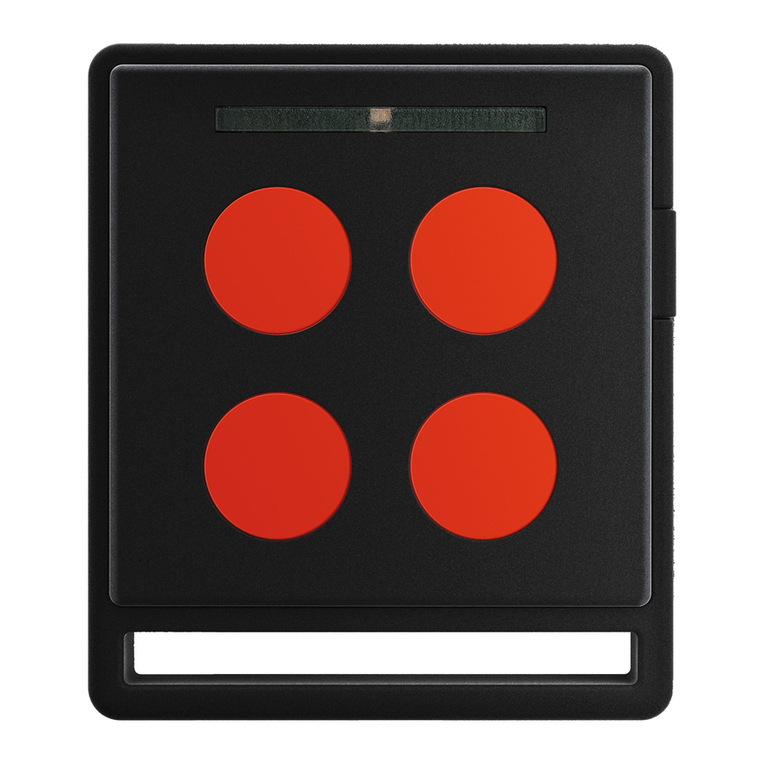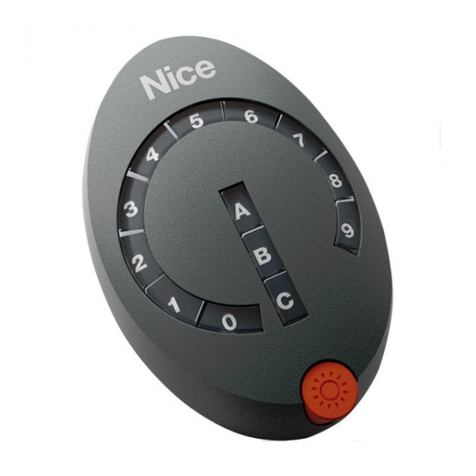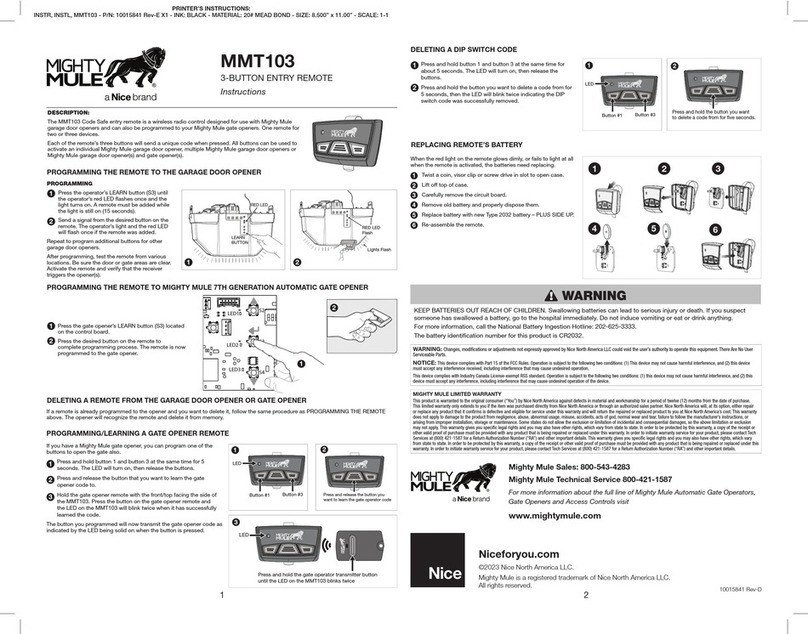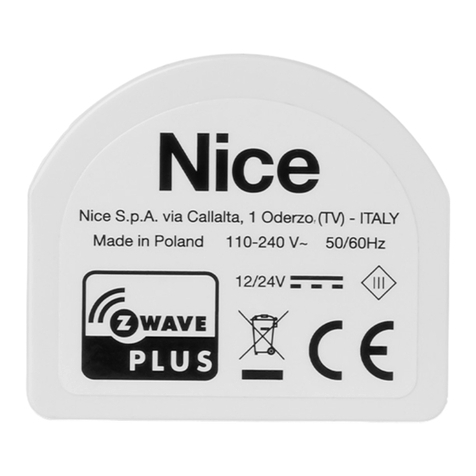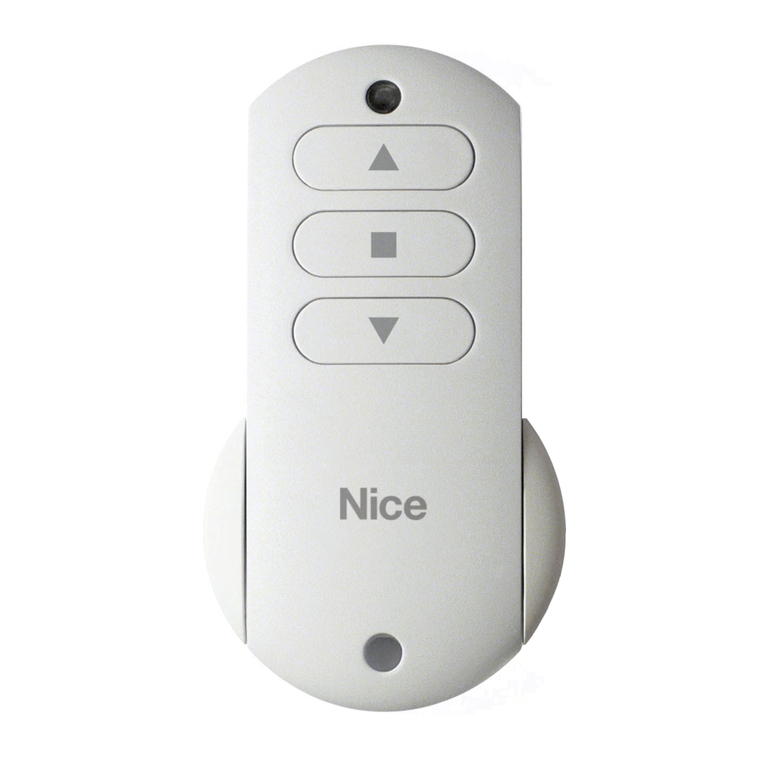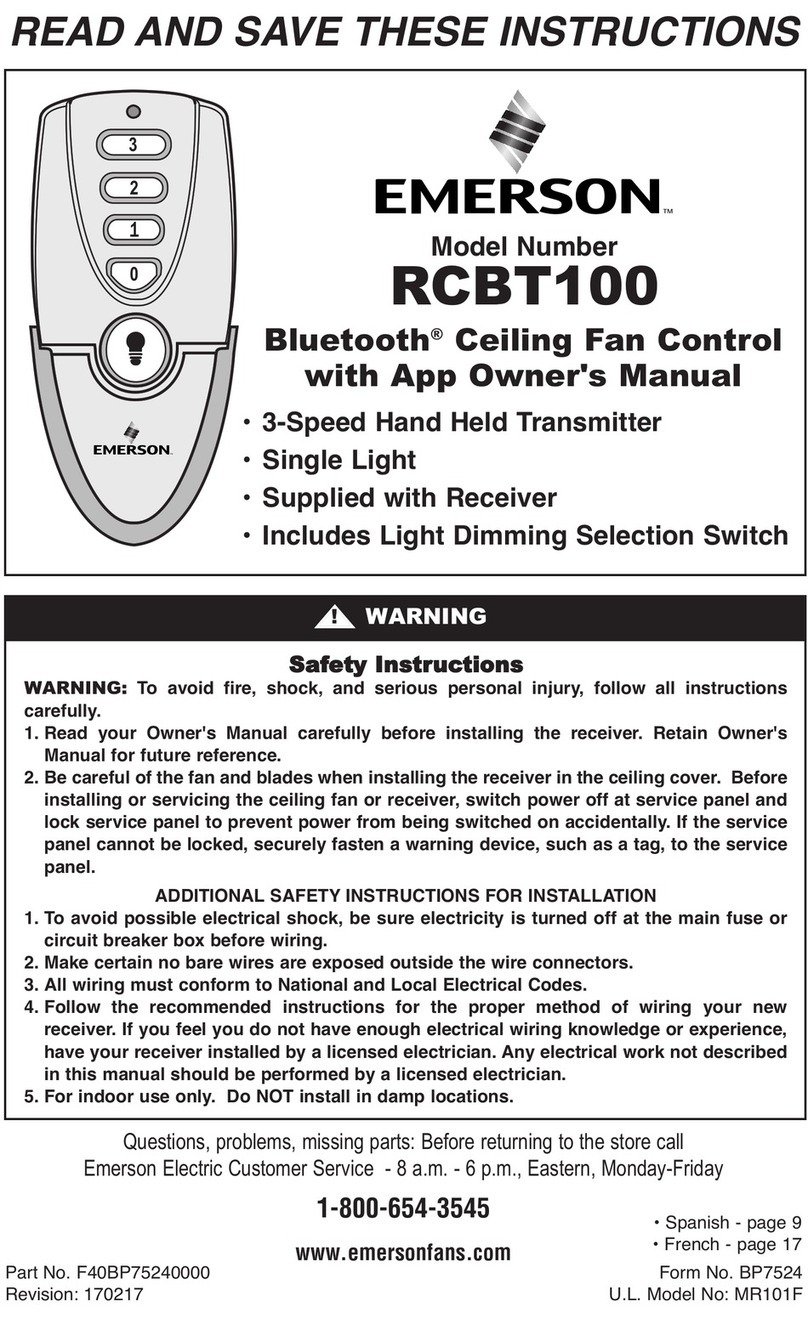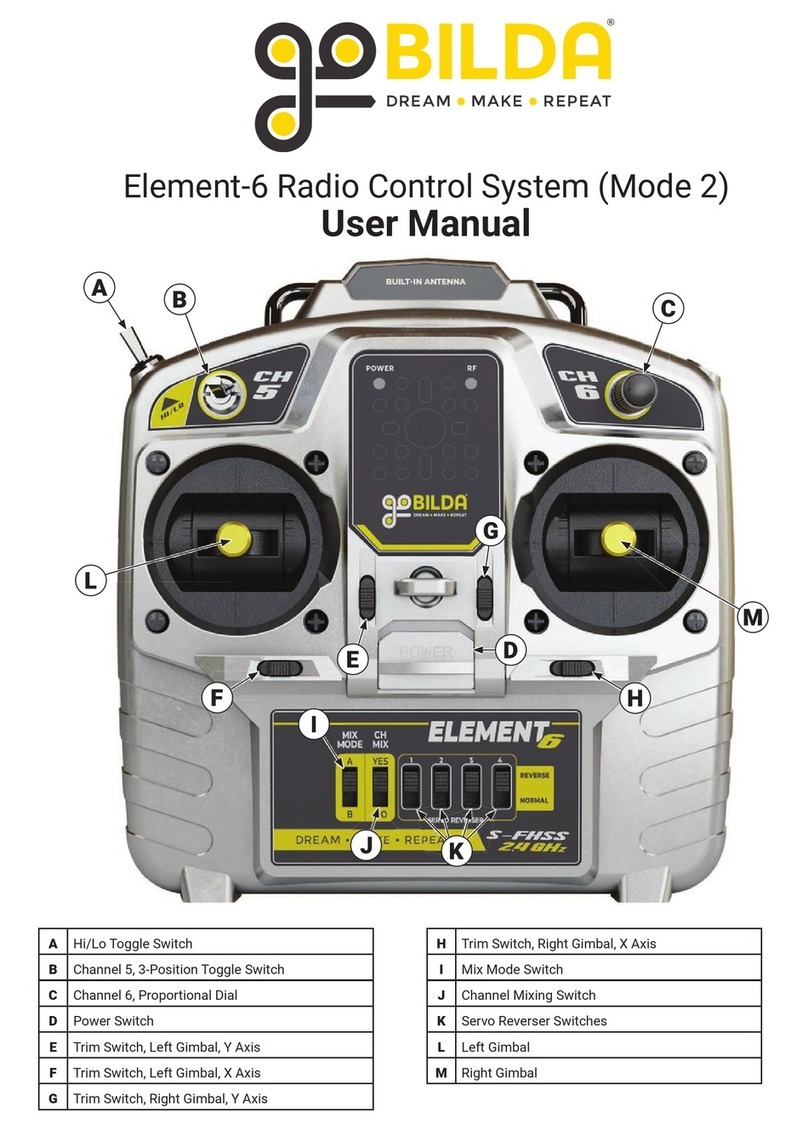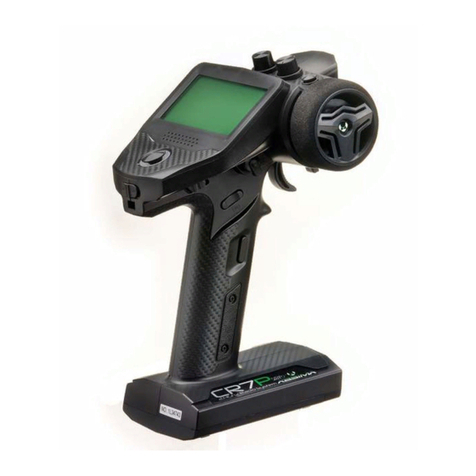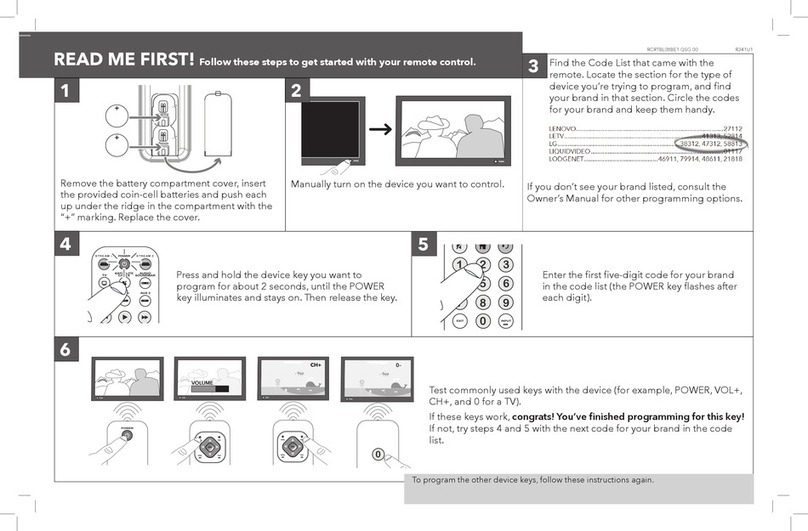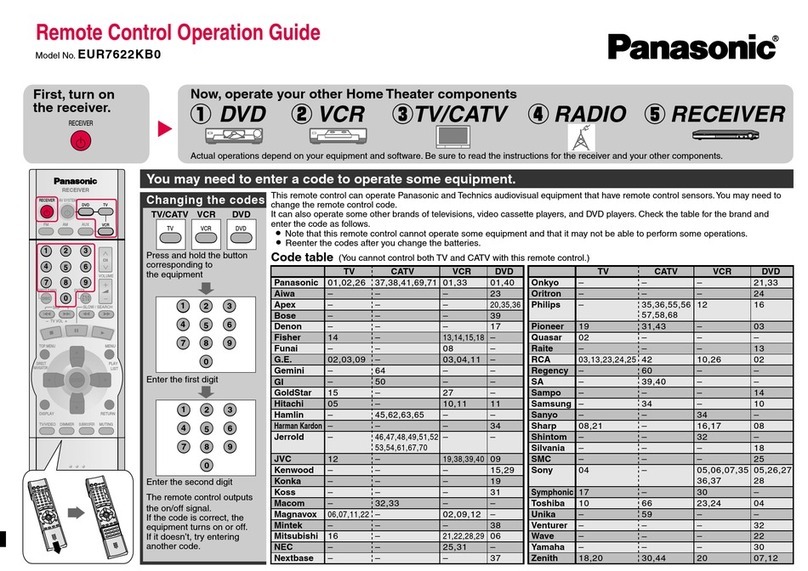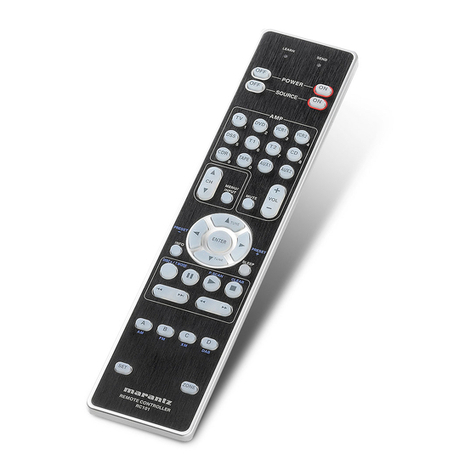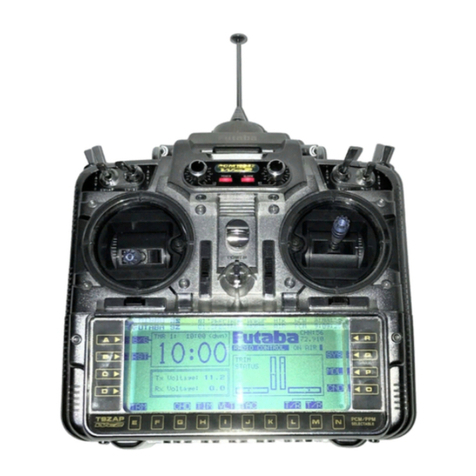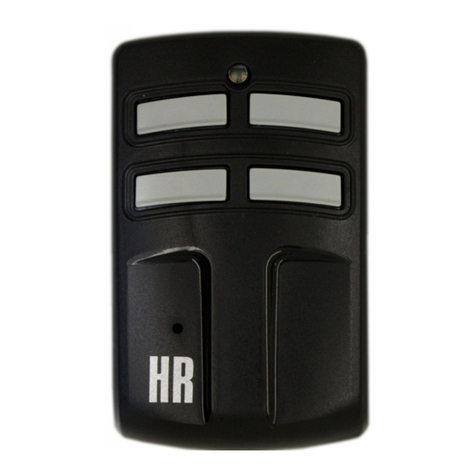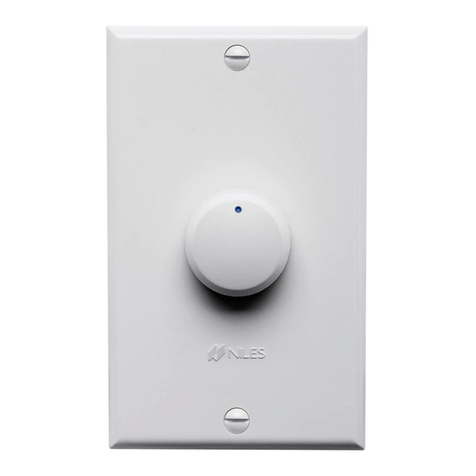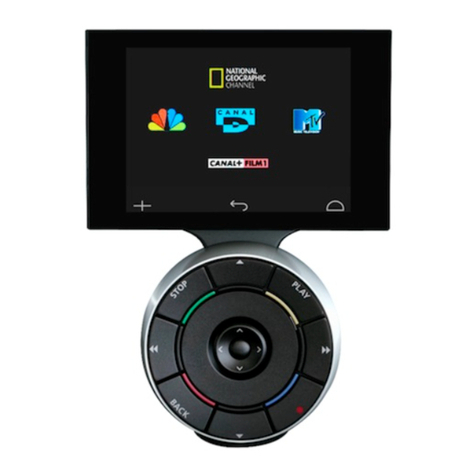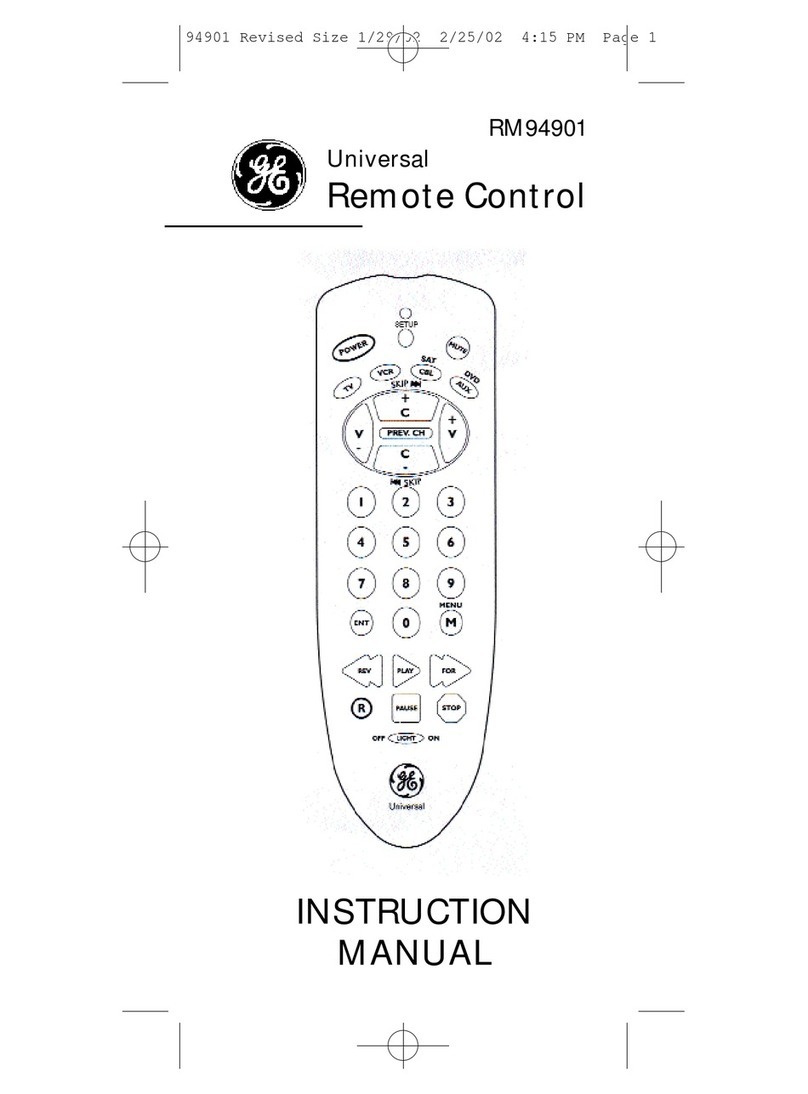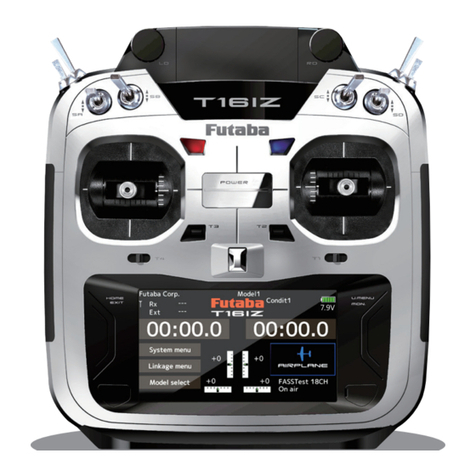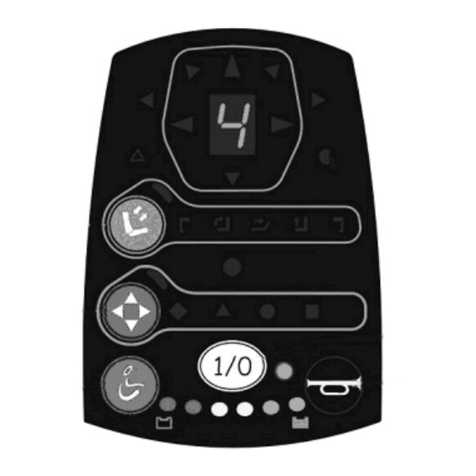9
Maintenance
The system does not require any special maintenance.
Disposal
This product is made from various kinds of material, some of which can
be recycled while others must be disposed of. Make sure you recycle or
dispose of the product in compliance with current laws. Some electronic
components may contain polluting substances; do not dump them.
Technical specifications
Carrier frequency : 433.92MHz
Coding : 64-bit digital (18 billion,
billion combinations)
Transmitter SM2 –SM4
Radiated power : 100µW
Buttons : 2 (SM2) or 4 (SM4)
Power input : 12Vdc +20% -40% with a 23A
type battery
Average absorption : 25mA
Working temperature : -40°C to +85°C
Dimensions and weight : diameter 48 h14mm, weight18g
Receiver SMX2
Memory : 256 codes
Input impedance : 52ohms
Sensitivity : better than 0.5µV (average range
150 – 200m with aerial)
Power input : without jumper = 24V typical. Limits
from 18 a to 24V direct or alternating.
: with jumper = 12V typical. Limits from
10 to 18V direct or alternating
Absorption when not working : 10mA at 24Vac
Absorption with 2 active relays : 60mA at 24Vac
N° relays : 2
Relay contact : normally open max. 0.5A and 50V
Energising time : about 200ms (reception of 2
correct codes)
De-energising time : about 300ms from last valid code
Working temperature : -10°C to +55°C
Box protected to : IP30D
Dimensions and weight : 86x57 h22mm, weight 55g
Manutenzione
Il sistema non necessita di alcuna manutenzione particolare.
Smaltimento
Questo prodotto è costituito da varie tipologie di materiali, alcuni possono
essere riciclati, altri dovranno essere smaltiti. Informatevi sui sistemi di
riciclaggio o smaltimento del prodotto attenendosi alle norme di legge
vigenti a livello locale. Alcuni componenti elettronici potrebbero contenere
sostanze inquinanti: non disperdeteli nell’ambiente.
Caratteristiche tecniche
Frequenza della portante : 433.92MHz
Codifica : digitale 64 bit (18 miliardi
di miliardi di combinazioni)
Trasmettitore SM2 –SM4
Potenza irradiata : 100µW
Tasti : 2 (SM2) oppure 4 (SM4)
Alimentazione :
12Vdc +20% -40% con batteria tipo 23A
Assorbimento medio : 25mA
Temperatura di funzionamento : -40°C a +85°C
Dimensioni e peso : diametro 48 h14mm, peso 18g
Ricevitore SMX2
Memoria : 256 codici
Impedenza d’ingresso : 52 ohm
Sensibilità : migliore di 0.5µV (portata media
150 – 200m con antenna)
Alimentazione : senza ponticello = 24V tipici. Limiti
da 18 a 24V continua o alternata
: con ponticello = 12V tipici. Limiti
da 10 a 18V continua o alternata
Assorbimento a riposo : 10mA a 24Vac
Assorbimento 2 relè attivi : 60mA a 24Vac
N° relè : 2
Contatto relè : normalmente aperto max 0.5A e 50V
Tempo eccitazione : circa 200ms (ricezione di 2 codici
corretti)
Tempo diseccitazione : circa 300ms dall’ultimo codice
corretto
Temperatura di funzionamento : -10°C a +55°C
Grado di protezione del contenitore
: IP30D
Dimensioni e peso : 86x57 h22mm, peso 55g
Maintenance
Le système n’a besoin d’aucune maintenance particulière
Mise au rebut
Ce produit est constitué de différents types de matériaux dont certains
peuvent être recyclés, d’autres doivent être mis au rebut. Informez-vous
sur les méthodes de recyclage ou de mise au rebut en suivant les normes
en vigueur sur le plan local. Certains composants électroniques peuvent
contenir des substances polluantes: ne les abandonnez pas dans la
nature.
Caractéristiques techniques
Fréquence : 433.92MHz
Codage : numérique 64 bits (18 milliards
de milliards de combinaisons)
Émetteur SM2 –SM4
Puissance irradiée : 100µW
Touches : 2 (SM2) ou 4 (SM4)
Alimentation :
12 Vcc +20% -40% avec pile type 23A
Absorption moyenne : 25mA
Température de fonctionnement : -40°C à +85°C
Dimensions et poids : diamètre 48 h14mm, poids 18g
Récepteur SMX2
Mémoire : 256 codes
Impédance d’entrée : 52ohms
Sensibilité : supérieure à 0.5µV (portée moyenne
150 – 200m avec antenne)
Alimentation : sans shunt = 24V typiques. Limites
de 18 à 24V continu ou alternatif
: avec shunt = 12V typiques. Limites
de 10 à 18V continu ou alternatif
Absorption au repos : 10mA à 24Vca
Absorption 2 relais actifs : 60mA à 24Vca
Nombre de relais : 2
Contact relais :
normalement ouvert max 0.5 A et 50 V
Temps excitation : environ 200 ms (réception de 2
codes corrects)
Temps désexcitation : environ 300 ms à compter du dernier
code correct
Température de fonctionnement : -10°C à +55°C
Protection du boîtier : IP30D
Dimensions et poids : 86x57 h22mm, poids 55g
Wartung
Das System ist praktisch wartungsfrei.
Entsorgung
Dieses Produkt besteht aus verschiedenen Werkstoffen, von denen
einige wiederverwertet werden können und andere dagegen entsorgt
werden müssen. Informieren Sie sich über die Recycling - oder
Entsorgungsmethoden und halten Sie sich strikt an die örtlich gültigen
Bestimmungen. Bestimmte elektronische Komponenten könnten
umweltverschmutzende Substanzen enthalten – nicht in die Umwelt geben!
Technische Merkmale
Empfangsfrequenz : 433.92MHz
Codierung : digital 64 bit (18 Milliarden von
Milliarden Kombinationen)
Sender SM2 –SM4
Ausgestrahlte Leistung : 100
µ
W
Tasten : 2 (SM2) oder 4 (SM4)
Stromversorgung : 12Vdc +20% -40% mit 23A Batterie
Durchschnittliche Leistungsaufnahme
: 25mA
Betriebstemperatur : -40°C bis +85°C
Abmessungen und Gewicht :
Durchmesser 48 H14mm, Gewicht 18g
Empfänger SMX2
Speicher : 256 Codes
Eingangsimpedanz : 52ohm
Empfindlichkeit : mehr als 0.5
µ
V (durchschnittliche
Reichweite 150 – 200m mit Antenne)
Stromversorgung : ohne Überbrückung = 24V Typische
Grenzen von 18 bis 24V Dauer-
oder Wechselstrom
: mit Überbrückung = 12 V Typische
Grenzen von 10 bis 18V Dauer-
oder Wechselstrom
Leistungsaufnahme in Ruhezustand
: 10mA bei 24Vac
Leistungsaufnahme mit 2 aktiven Relais
: 60mA bei 24Vac
Relais Nr. : 2
Relaiskontakt :
gewöhnlich geöffnet max 0.5A und 50V
Erregungszeit : ca. 200ms (Empfang von 2 korrekten
Codes)
Entregungszeit :
ca. 300ms ab dem letzten korrekten Code
Betriebstemperatur : -10°C bis +55°C
Schutzart des Gehäuses : IP30D
Abmessungen und Gewicht : 86x57 H22mm, Gewicht 55g
GB
I
F
D
